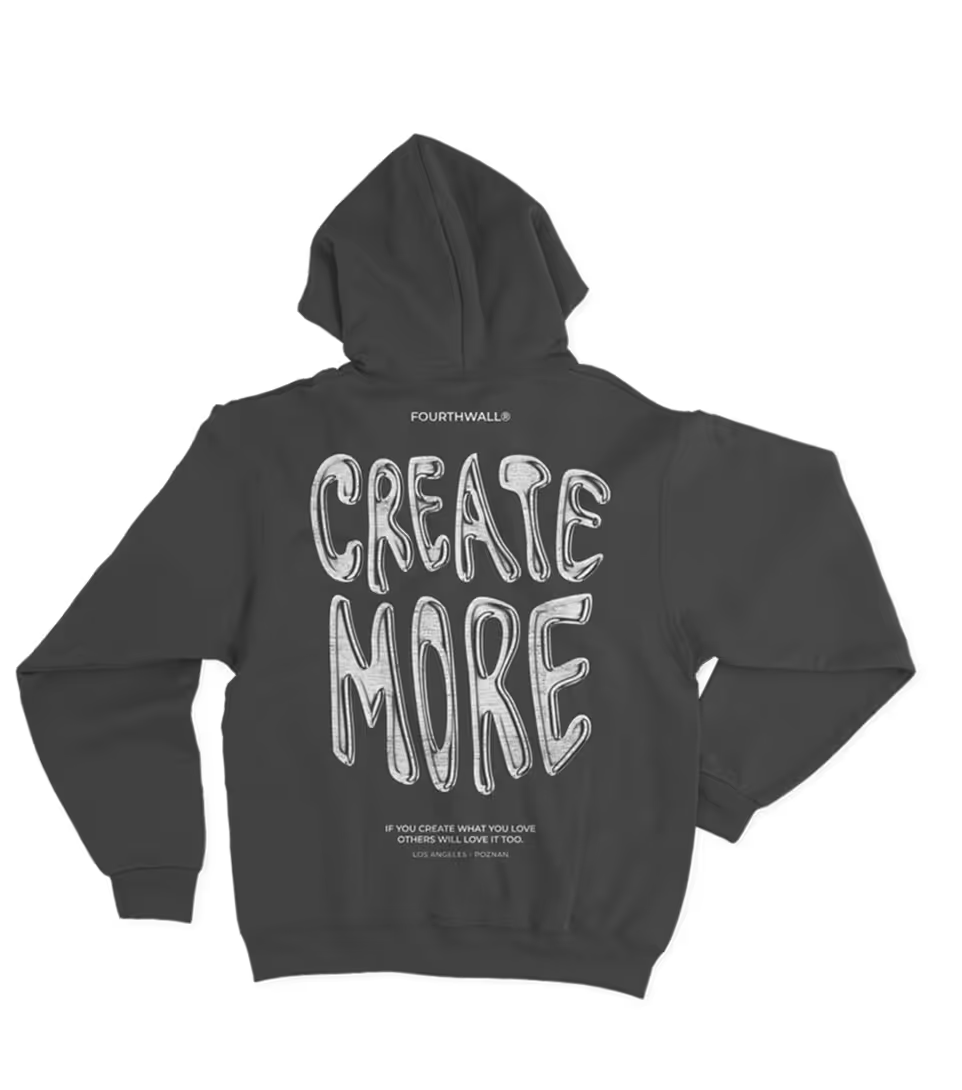How to Make a Custom Music Streaming App: 7 Steps for Creators

It’s hard to believe that the art of making your own mixed cassette tape or CD is now a thing of the past.
Today, everyone has access to an infinite library of music from the convenience of their phone. Music streaming apps have become a ubiquitous part of modern life, transforming how people discover, listen to, and share music.
With the surge in online content consumption, creating a personalized music streaming platform offers content creators a significant opportunity to engage with their audience in a unique and dynamic way.
This article will delve into the music streaming market, highlight popular apps, explore different types of streaming services, outline essential features, and provide a step-by-step guide to building your own music streaming application.
Music Streaming App Market Overview
The music streaming app market has experienced exponential growth in recent years, and this trend is expected to continue into 2024 and beyond. According to recent data, the global music streaming market is projected to reach a value of $33.97 billion by 2027, driven by a compound annual growth rate (CAGR) of 12.16% from 2021 to 2027. This growth is fueled by increasing internet penetration, the proliferation of smartphones, and a growing preference for on-demand music access among consumers worldwide.
Key Market Drivers
Several factors are driving this market growth:
- Internet and Smartphone Penetration: With the global increase in internet accessibility and smartphone ownership, more people can access music streaming services. This trend is particularly significant in emerging markets where internet infrastructure and smartphone usage are rapidly expanding.
- Consumer Preferences: There is a noticeable shift in consumer preferences from owning music to accessing it on-demand. The convenience, extensive library, and affordability of music streaming services make them attractive to a broad audience.
- Technological Advancements: Improvements in streaming technology, such as high-fidelity audio and seamless user interfaces, enhance the user experience and encourage more people to subscribe to music streaming services.
Key Trends Shaping the Market
- Integration of Social Features: Music streaming apps are increasingly incorporating social features to enhance user engagement. Features such as shared playlists, social media integration, and collaborative listening sessions allow users to connect with friends and discover new music through their networks.
- Personalized Playlists: Personalization is a significant trend in the music streaming industry. Advanced algorithms and artificial intelligence (AI) are used to analyze user behavior and preferences, creating tailored playlists and recommendations. This not only enhances user satisfaction but also increases user retention.
- Rise of Niche Streaming Services: As the market matures, there is a growing demand for niche streaming services that cater to specific genres, communities, or interests. These services offer unique content and cater to specific audience segments, such as classical music enthusiasts, jazz lovers, or regional music fans. This trend allows for greater market segmentation and provides opportunities for smaller, specialized players to thrive.
Types Of Music Streaming Apps
1. Music Library
Music library apps provide users with access to a vast catalog of songs that they can listen to on-demand. These apps often feature extensive libraries with millions of tracks across various genres and artists. Users can search for specific songs, create playlists, and enjoy personalized recommendations. Popular examples include Spotify, Apple Music, and Amazon Music.
2. Cloud Storage
Cloud storage music apps allow users to upload their own music files to the cloud and access them from any device. This type of app is particularly useful for users who have large personal music collections that they want to store and stream without relying on a third-party service's catalog. Google Play Music (before its merger with YouTube Music) was a prominent example of this type of service.
3. Radio Stations
Radio station apps offer a continuous stream of music based on user preferences or predefined stations. Unlike on-demand services, users do not choose specific songs but rather enjoy a curated selection of tracks. These apps often include features like genre-specific stations, artist-based stations, and talk radio. Examples include Pandora and iHeartRadio.
Most Popular Music Streaming Apps in 2024
Spotify

Spotify continues to dominate the global music streaming market, with a user base exceeding 602 million active users and 236 million paying subscribers as of 2024. Renowned for its expansive catalog spanning millions of songs across various genres, Spotify stands out for its user-centric features and seamless integration into daily life.
The platform's personalized playlists, such as Discover Weekly and Release Radar, utilize sophisticated algorithms to curate music based on individual listening habits, ensuring that users continuously discover new tracks aligned with their tastes.
Additionally, Spotify's annual retrospective feature, Spotify Wrapped, has become a cultural phenomenon by summarizing users' most-played songs, artists, and genres each year. Whether through its ad-supported free plan or the ad-free premium subscription, Spotify offers a versatile listening experience that adapts to users' preferences, making it a preferred choice for music lovers worldwide.
YouTube Music

YouTube Music has established itself as a versatile music streaming platform, appealing to users with its unique integration of a vast library of official music videos alongside audio tracks. As of the latest data, YouTube Music boasts over 100 million paid subscribers, highlighting its growing popularity among music enthusiasts globally.
The platform offers a comprehensive collection of songs, albums, and music videos spanning various genres, catering to diverse musical tastes. A standout feature of YouTube Music is its personalized playlists, such as "Discover Mix" and "New Release Mix," which are curated using advanced AI algorithms.
These playlists continuously adapt based on the user's listening history and preferences, ensuring that users receive tailored music recommendations and discover new artists and tracks effortlessly. This multifaceted approach not only enhances user engagement but also underscores YouTube Music's commitment to providing a dynamic and immersive music streaming experience.
Apple Music

Apple Music distinguishes itself with its tight integration within the Apple ecosystem, appealing to over 93 million subscribers globally. Offering access to a vast library of more than 100 million songs, including exclusive releases and live radio stations such as Beats 1, Apple Music provides a comprehensive music streaming experience.
The platform excels in personalization, leveraging advanced algorithms to deliver tailored music recommendations and curated playlists that cater to individual tastes and moods. One of its standout features is the seamless integration with users' existing iTunes libraries, allowing for easy access to purchased music and synced playlists across devices.
Apple Music is renowned for its commitment to high-quality sound, offering users the option to enjoy their favorite tracks in pristine audio formats. Combined with its intuitive and user-friendly interface, Apple Music continues to be a preferred choice for Apple enthusiasts seeking a cohesive and premium music streaming experience.
Amazon Music

Amazon Music has made significant strides in the music streaming market, with over 82 million subscribers. Known for its commitment to high-quality audio streaming, Amazon Music offers users the option to enjoy their favorite tracks in HD and Ultra HD formats, appealing particularly to audiophiles seeking superior sound fidelity.
Integration with Amazon Prime enhances the value proposition by bundling music streaming with other Amazon services, such as fast delivery, Prime Video, and exclusive deals. Alexa voice control further enhances the user experience, allowing hands-free navigation and playback through compatible devices.
Amazon Music's curated playlists cater to various moods and occasions, ensuring that users discover new music effortlessly. With features like offline listening for uninterrupted playback and continuous updates to its music library, Amazon Music continues to attract and retain a broad audience of music enthusiasts looking for both convenience and quality.
Essential Features Of Music Streaming Apps
Playlist
Playlists are fundamental to any music streaming app. They allow users to create, customize, and share collections of their favorite songs. Playlists can be based on moods, genres, activities, or personalized recommendations. A robust playlist feature enhances user engagement and retention.

High-Quality Audio Streaming
Offering high-quality audio streaming is essential for attracting audiophiles and ensuring a premium listening experience. Options like HD, lossless, and Ultra HD streaming provide users with superior sound quality, making the app stand out from competitors.

Lyrics Display
Displaying lyrics in real-time allows users to sing along with their favorite tracks and better understand the words. This feature adds an interactive element to the app and enhances user engagement.

Personalized Recommendations
Personalized recommendations go beyond AI suggestions by curating content based on user interactions, such as likes, skips, and listening frequency. These tailored playlists help users discover new music, encouraging longer usage and downloads.

Social Sharing and Integrations
Social sharing features enable users to share their favorite songs, playlists, and artists with friends on social media platforms. Integrations with services like Facebook, Instagram, and Twitter help increase the app's visibility and user base.

How To Build A Music Streaming App In 7 Steps
1. Conduct Market Research
Conducting thorough market research is the foundational step in building a successful music streaming app. This involves understanding your target audience in-depth by identifying their demographics, listening habits, preferences, and pain points.
Analyze competitors by examining their strengths, weaknesses, features, and user reviews to gain insights into what works and what doesn't in the current market. Assessing user needs and preferences helps identify gaps that your app can fill, thereby creating a unique selling proposition (USP) that sets your app apart from others.
By leveraging this research, you can develop a strategic roadmap that aligns with market demands, ensuring that your app offers a compelling and differentiated experience that resonates with potential users.
2. Music Licensing
Obtaining the necessary licenses to stream music legally is a critical step in developing a music streaming app. This involves negotiating agreements with record labels, music publishers, and rights organizations such as ASCAP, BMI, and SESAC in the United States, as well as their international counterparts like PRS for Music in the UK and SOCAN in Canada.
These licenses typically include mechanical licenses, public performance licenses, and synchronization licenses, ensuring that you have the legal right to stream and distribute music on your platform. Additionally, dealing with aggregators and digital distribution services can help streamline the process of acquiring a comprehensive music catalog.
Given the complexity and evolving nature of music rights, staying updated with the latest regulations and trends in the music industry is crucial to maintaining compliance and avoiding legal issues.
3. Tech Stack Selection
Selecting the appropriate technology stack is essential for developing a robust and scalable music streaming app. For iOS development, Swift is the preferred programming language due to its performance and integration with Apple's ecosystem.
For Android, Kotlin is the recommended choice, offering modern language features and interoperability with Java. The backend infrastructure is equally critical; cloud services such as Amazon Web Services (AWS) or Google Firebase provide scalable server solutions, robust data storage, and real-time database capabilities.
These services also offer essential features like authentication, analytics, and push notifications, which are vital for a seamless user experience. Additionally, integrating content delivery networks (CDNs) can ensure efficient media streaming while leveraging technologies like GraphQL can enhance the efficiency of data querying.
By carefully choosing the right tech stack, you can ensure that your app is performant, reliable, and ready to handle the demands of a growing user base.
4. Develop the App
With a clear plan and selected tech stack, the next step is to start coding and developing the app. Emphasize creating a user-friendly interface that ensures intuitive navigation and an engaging user experience.
Essential features to integrate include the ability to create and manage playlists, providing users with the flexibility to organize their favorite tracks. Incorporate advanced AI-driven recommendations to offer personalized music suggestions based on user preferences and listening history, enhancing user engagement and satisfaction.
Ensure high-quality audio streaming by utilizing efficient encoding and adaptive bitrate streaming technologies, which maintain audio quality while optimizing performance across different network conditions.
Additionally, remember to implement robust backend support for real-time updates and seamless playback. This will ensure that the app performs well under varying loads and provides a consistent, high-quality experience for all users.
5. Perform Integrations
Integrating third-party services is a crucial step in enhancing the functionality and user experience of your music streaming app. Implement secure and efficient payment processing solutions such as Stripe, PayPal, or Apple Pay to handle subscriptions and in-app purchases.
Utilize analytics tools like Google Analytics, Mixpanel, or Firebase Analytics to track user behavior, app performance, and engagement metrics. These tools provide valuable insights for continuous improvement.
For user authentication, incorporate reliable services like OAuth, Firebase Authentication, or Auth0 to ensure secure and streamlined login processes. Additionally, ensure seamless integration with social media platforms such as Facebook, Twitter, and Instagram, enabling users to share their favorite tracks, playlists, and activities, as well as use social logins for quick and easy access to the app.
These integrations not only enhance the app's functionality but also contribute to a more cohesive and engaging user experience.
6. Testing and Refinement
Thorough testing and refinement are essential to ensuring the app's reliability and user satisfaction. This phase involves rigorous testing to identify and fix bugs across various devices and operating systems, ensuring compatibility and stability.
Performance testing is critical to assess the app’s responsiveness, load times, and scalability under different conditions, while security testing ensures that user data is protected against potential vulnerabilities and breaches.
User experience (UX) testing is equally important. It focuses on the app’s design, navigation, and overall usability to guarantee an intuitive and enjoyable experience. This includes both automated testing for consistent and repeatable test coverage and manual testing to catch issues that automated tests might miss.
Gathering feedback from beta testers can provide valuable insights into real-world usage and help fine-tune the app. By addressing these aspects meticulously, you can ensure a smooth and successful launch, offering a polished and reliable product to your users.
7. Deploy the App
Preparing for the app launch involves several key steps to ensure a successful deployment and strong initial reception.
First, thoroughly review and comply with the submission guidelines for both the Google Play Store and Apple App Store, ensuring your app meets all technical, design, and content requirements. This includes creating compelling app store listings with high-quality screenshots, engaging descriptions, and relevant keywords to enhance visibility.
Once submitted, plan for potential review feedback and be ready to make necessary adjustments. Concurrently, implement a robust marketing strategy to promote your app and attract users. This strategy should include pre-launch buzz through social media campaigns, influencer partnerships, email marketing, and content marketing.
Consider leveraging app store optimization (ASO) techniques, paid advertising, and PR efforts to increase awareness and drive downloads. By coordinating these efforts, you can maximize your app’s exposure, attract a large user base, and ensure a successful launch.
Create A Music Streaming App With Fourthwall
Fourthwall offers a unique platform that enables creators to develop their own music streaming app by uploading a wide range of audio and video-on-demand (VOD) content without any coding or app store approval.
Any creator with a Fourthwall membership site can easily create an app that is automatically branded to match their site. This app allows members to access exclusive content, shop for merchandise, and engage with the creator's community seamlessly.
Join Fourthwall today and take your content creation to the next level!
















